The SilverStone Strider Platinum ST1000-PT & ST1200-PT PSU Review: Tenured
by E. Fylladitakis on May 4, 2018 9:00 AM EST- Posted in
- Cases/Cooling/PSUs
- PSUs
- SilverStone
- 80Plus Platinum
External Appearance
Externally, the SilverStone Strider Platinum ST1000-PT and ST1200-PT are almost identical, with the sole exception being the stickers on the left side of the units. Both units are 180 mm deep, which is relatively short for units with that kind of power output, yet certainly longer than what the ATX standard dictates. Their depth will increase the compatibility with compact cases but they will certainly not fit in every ATX-compliant case.
The chassis of both units is sprayed with a textured black paint that is slightly rough to the touch but is also smudge and scratch resistant. The sticker with the PSU's electrical specifications is on the left side of the chassis, while the right side is almost completely plain, with just small version and serial number stickers present. SilverStone's logo is engraved at the top side of the PSU. There is also a black sticker at the top, featuring the legend of the PSU's connectors, as it would not fit at the front side of the unit. A metallic badge with the company's logo also covers the center of the cooling fan.
The front side of the unit is almost completely covered by the huge number of cable connectors. With the exception of the ATX plug, the connectors feature plastic caps. The CPU and PCIe do not share the same connectors, with the former being blue and the latter black. These connectors look the same but they are keyed so, for example, the PCIe cables will not fit in the CPU connectors. The rear of the PSUs is uninteresting, with only the AC cable receptacle and a small switch to be found.
Internal Design
Both the ST1000-PT and the ST1200-PT are using the same cooling fan, which is the customized flow version of the HA1425H12B-Z made by Hong Hua. The fancy-looking grill is not just for show, as it is supposed to focus airflow directly in front of the fan rather than allowing it to chaotically spread to all directions. It sports a dual ball bearing engine. The fan has a maximum rotational speed of about 2400 RPM.
The ST1000-PT and ST1200-PT are not identical only on the outside but on the inside as well. Both units are based on the exact same platform and even many of their components are the same. The only difference between the two units is that the 1200 Watts version has some higher-spec components that allow it to reach a higher power output.
The OEM behind the creation of these two units is Enhance, a company that SilverStone entrusts most of their PSUs. The platform design is relatively simple and clean, as Enhance is focused on quality and stability more than anything else.
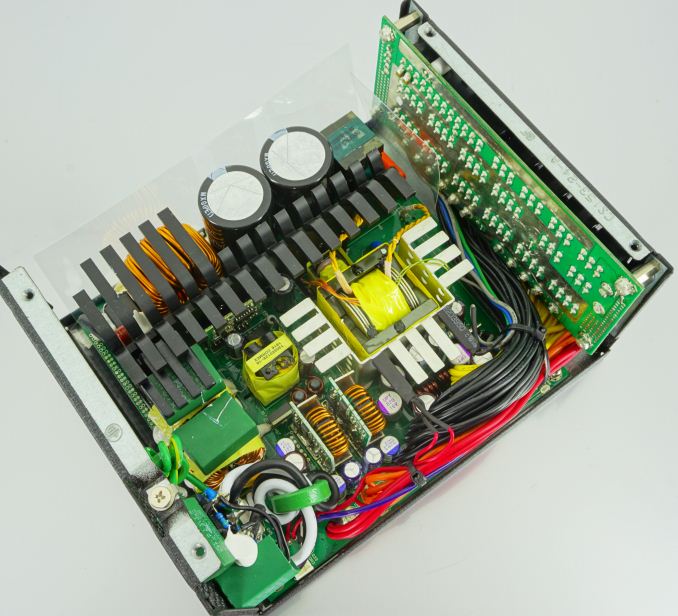
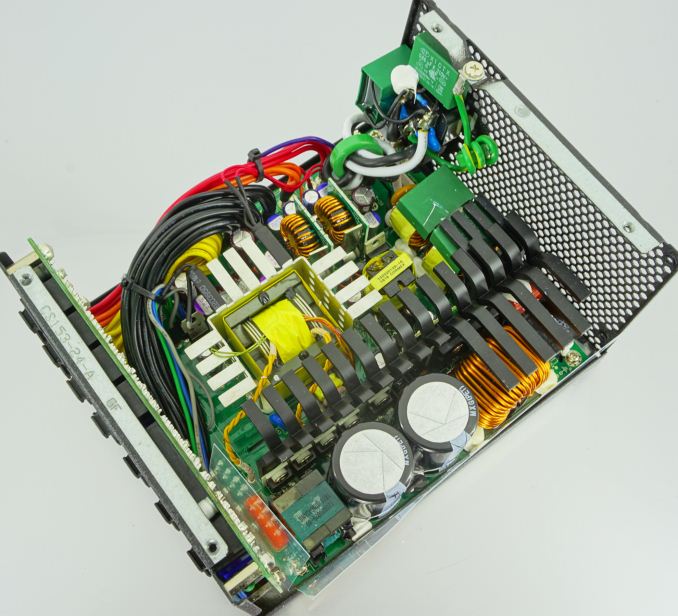
The SilverStone Strider Platinum ST1000-PT (up) and ST1200-PT (down)
The filtering stage of both units is identical, consisting of four Y capacitors, four X capacitors and two filtering inductors. Surges are suppressed by a MOV and inrush current is limited via a NTC thermistor/relay configuration. Moving forward, we find two input rectifier bridges sandwiched together on a small heatsink that can be found beneath the main heatsink of the PSU.

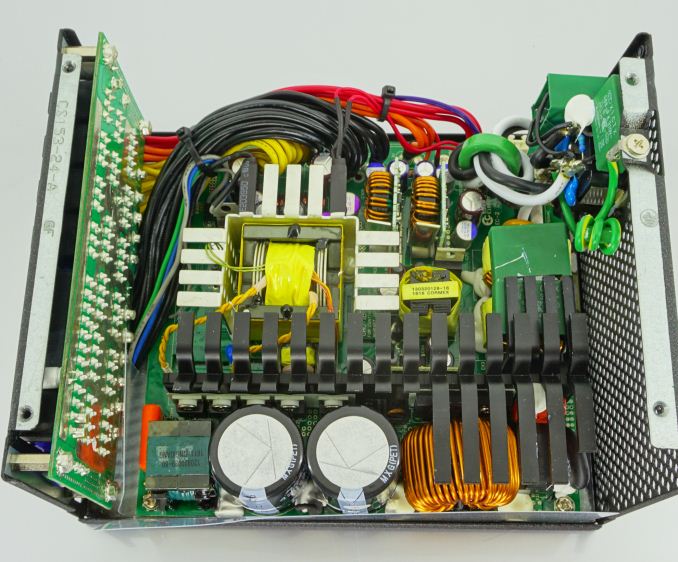
The SilverStone Strider Platinum ST1000-PT (left) and ST1200-PT (right)
The main heatsink of the PSU is physically large but has thick and short fins, resulting to a relatively small heat dissipation surface. It holds the active components of the PFC and also the MOSFETs of the primary inversion stage. A large filtering PFC choke can be seen beneath its longer fins, followed by two APFC capacitors. The PFC capacitors differ between the two models, with two Nippon Chemi-Con 450V/540μF in the ST1000-PT and two Rubycon 420V/390μF in the ST1200-PT.


The SilverStone Strider Platinum ST1000-PT (left) and ST1200-PT (right)
The primary inversion circuit consist of four MOSFETs that form a LLC resonant full-bridge converter design. A single 12V line is generated at the secondary side of the PSUs by a massive rectifier configuration formed by twelve MOSFETs. The minor 3.3V/5V lines are generated via DC-to-DC converters, which can be seen on their own small PCBs. The filtering capacitors are a chaos, with both units using a mix of electrolytic capacitors from Nippon Chemi-Con, Rubycon, and Unicon, as well as solid-state capacitors from Nippon Chemi-Con, Nichicon, and Unicon.


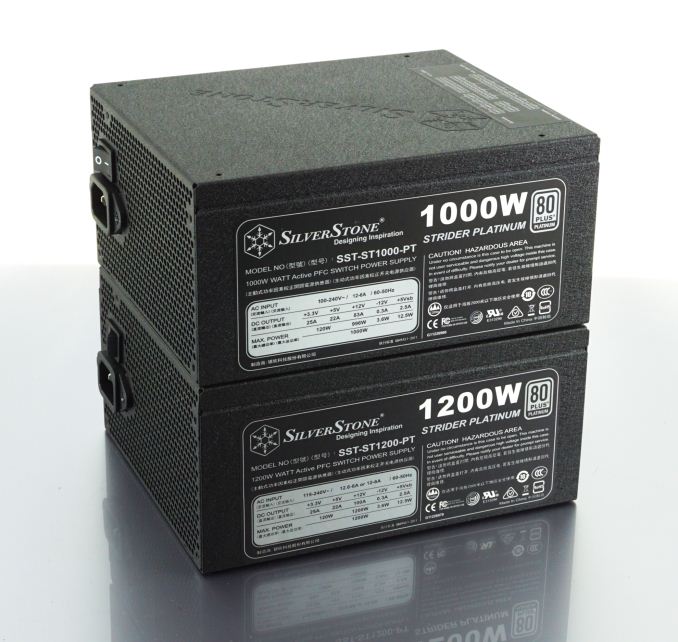
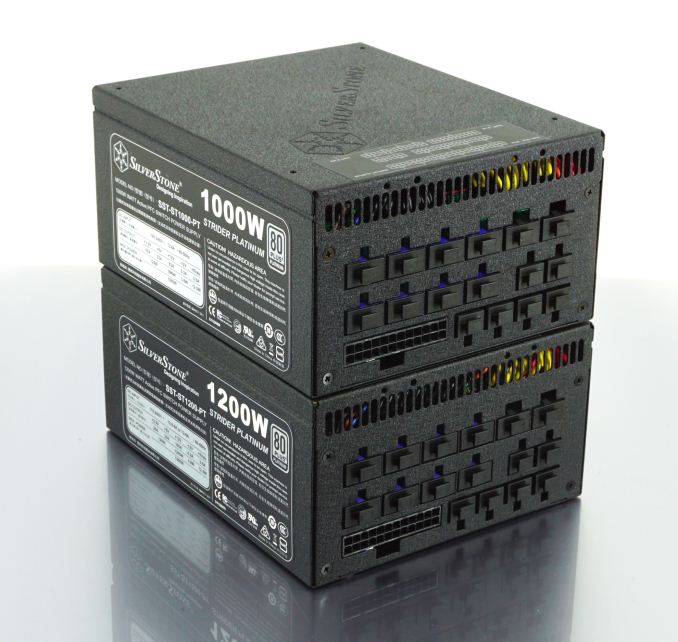
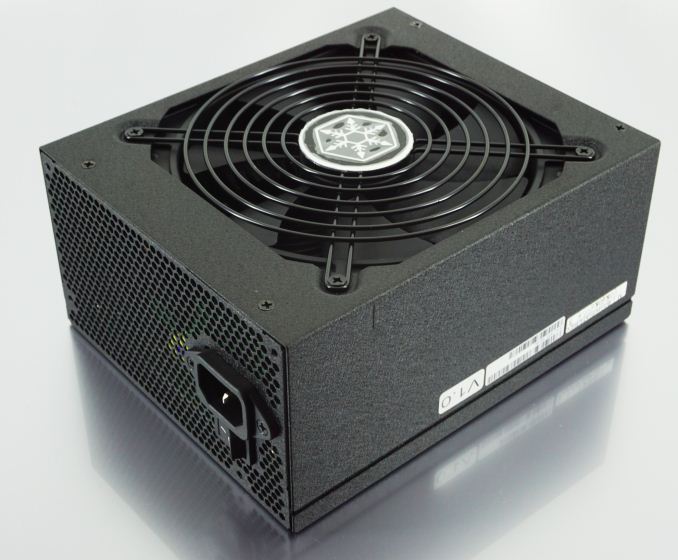
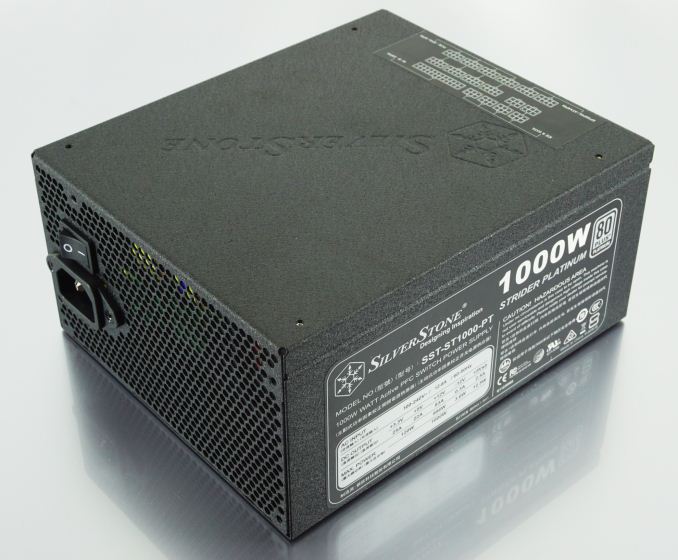
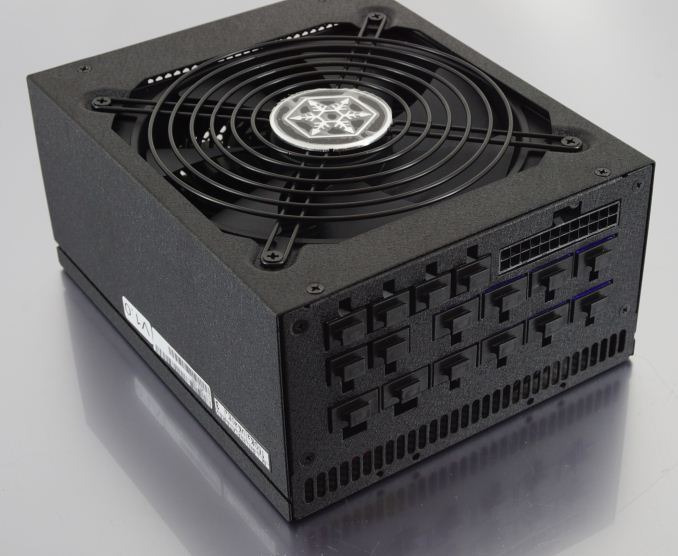

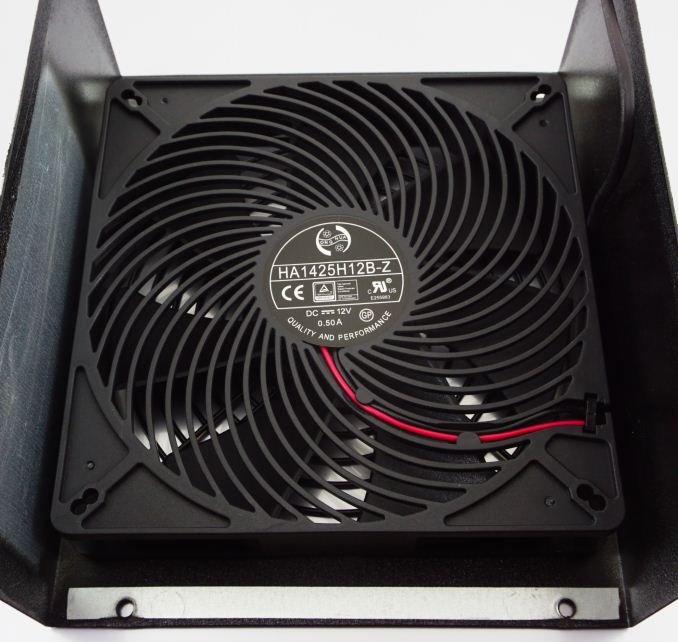
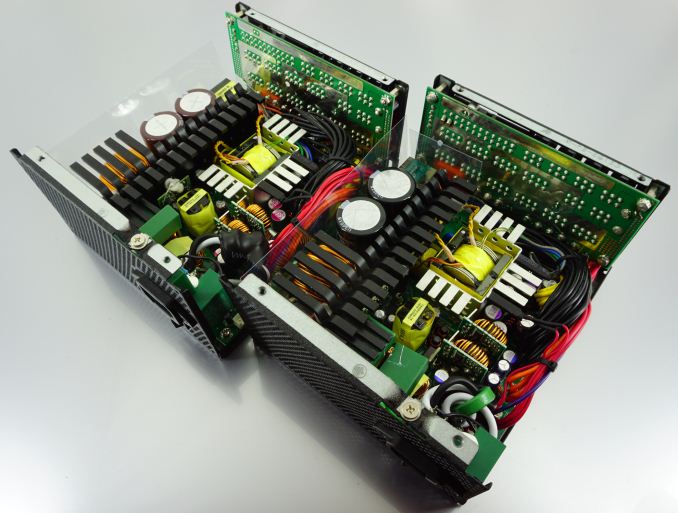
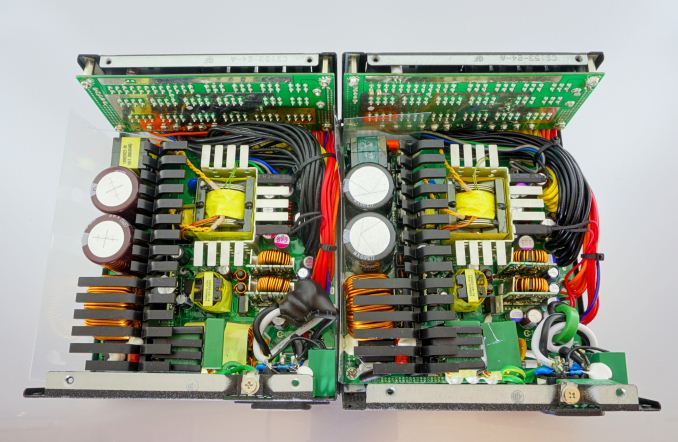
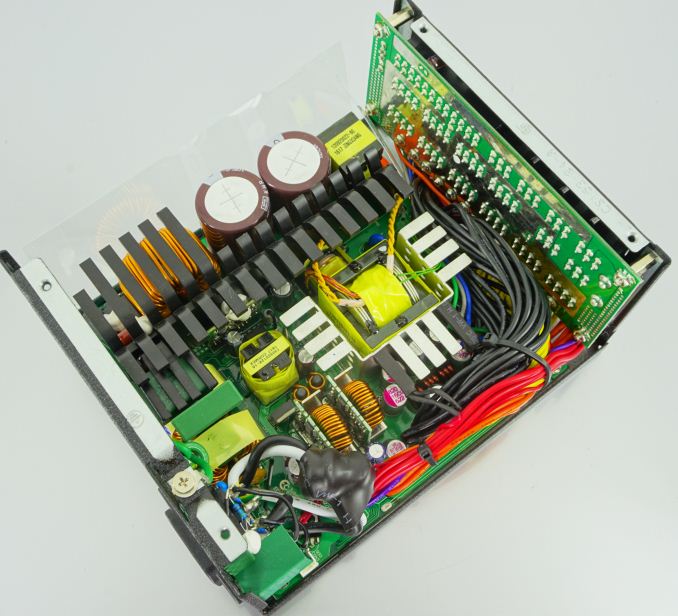









21 Comments
View All Comments
techguymaxc - Friday, May 4, 2018 - link
I have a PC Power & Cooling 1200W Silencer Mark III that I purchased 5 years ago. It had already been on the market for a year or 2 at that point. It is also 180mm deep. I don't find the following statement to be terribly compelling, or remarkable, in light of this fact: "Both units are 180 mm deep, which is relatively short for units with that kind of power output, yet certainly longer than what the ATX standard dictates."milkywayer - Friday, May 4, 2018 - link
We need more compact SFX PSUs. I understand there is a market for this but it baffles me why I kept using tower cases after having moved to an SFF case which can fit a 1080 ti, 32 gigs of ram, 8700k, two 3.5inch hdd and multiple ssds. All in a case a about 30 the size of my previous case.CheapSushi - Friday, May 4, 2018 - link
I just really want an SFX-L PSU with two EPS connectors for HEDT boards. I really don't care for the size of regular PSU's anymore regardless of what I'm building and what case. It just seems natural that with everything else miniaturizing, getting better, etc, that PSU's should too. Hell, sometimes the PSU's are half the volume of the rest of what takes up the space in an build.close - Monday, May 7, 2018 - link
PSUs are the only component in a PC that have to use some pretty large components like thumb-sized electrolytic capacitors, transformers, chokes, or even the AC socket (by function and design) while also dissipating up to 100+W.Now of course problem might be solved by throwing enough money at it. But would you still like the sticker price?
DanNeely - Monday, May 7, 2018 - link
There're SFX sized PSUs powerful enough to run dual GPUs, so there's no technical reason they couldn't offer 2xEPS connectors instead.I'd suggest @CheapSushi look for a modular design that uses the same 12V connector on the PSU for the EPS and GPU cables; then get 2nd EPS cable for it separately. With full ATX if they use the same PSUside plug or not is hit and miss, so you need to look closely. It should be clear from the markings on the PSU itself though if they're specialized or generic 12V 8 pin sockets.
close - Tuesday, May 8, 2018 - link
Sorry, I somehow read the comment as "I really don't care for the size of [SFX] PSUs anymore". Was wondering how much smaller can they get ant still do the job at a reasonable price.DanNeely - Tuesday, May 8, 2018 - link
There isn't a standard size significantly smaller than SFX. The longer narrower TFX spec might be a better fit for really thin SFF cases, but is only a few percent smaller in internal volume. Below that in size you end up with PicoPSU's and their equivalent which take a 12V (or 19V in some higher power models) external power brick which plugs into a tiny PCB that plugs into the 24pin atx connector and has a handful of other cables branch off from there. Looking at the size of higher powered laptop bricks you probably could make a 1/2 to 1/4 SFX sized internal PSU with a 40/50mm fan for GPUless SFF systems; but with even smaller platforms like NUC eating that segment of the market there probably isn't the demand for it.DanNeely - Tuesday, May 8, 2018 - link
There isn't a standard size significantly smaller than SFX. The longer narrower TFX spec might be a better fit for really thin SFF cases, but is only a few percent smaller in internal volume. Below that in size you end up with PicoPSU's and their equivalent which take a 12V (or 19V in some higher power models) external power brick which plugs into a tiny PCB that plugs into the 24pin atx connector and has a handful of other cables branch off from there. Looking at the size of higher powered laptop bricks you probably could make a 1/2 to 1/4 SFX sized internal PSU with a 40/50mm fan for GPUless SFF systems; but with even smaller platforms like NUC eating that segment of the market there probably isn't the demand for it.CheapSushi - Wednesday, May 9, 2018 - link
Also look into PSU's like FSP's Twins 500W. Two PSU's, redundant, in the same ATX form factor and then tell me power density can't be improved in SFX and SFX-L.CheapSushi - Wednesday, May 9, 2018 - link
One issue is that PSU cables are not standardized. I've seen some SFX PSU's label their port as GPU & CPU. But some other SFX PSU's don't. I've read some people have accidentally screwed up their mobos because of this.As for close, there are SFX-L examples already showing what you can do with density. There's already new improvements taking hold with all digital designs and for example Corsair using Gallium Nitride (GaN) MOSFET's. I am 100% prepared to pay more for better SFX and SFX-L PSU's and as they become the norm and companies focus more on them, price would go down regardless. You're assuming just because parts are larger than power per volume can't get any better. That's not true at all. I just don't see the point of ATX anymore in terms of necessity unless going up to 1500W to 2000W where you do need more space. Almost every single consumer rig, gaming rig and most workstations have enough with SFX and SFX-L. Just my issue is that power cables are NOT standardized, the ports aren't standardized and I can't seem to find an SFX-L with 100% assured confidence that I can use a port for a second EPS.